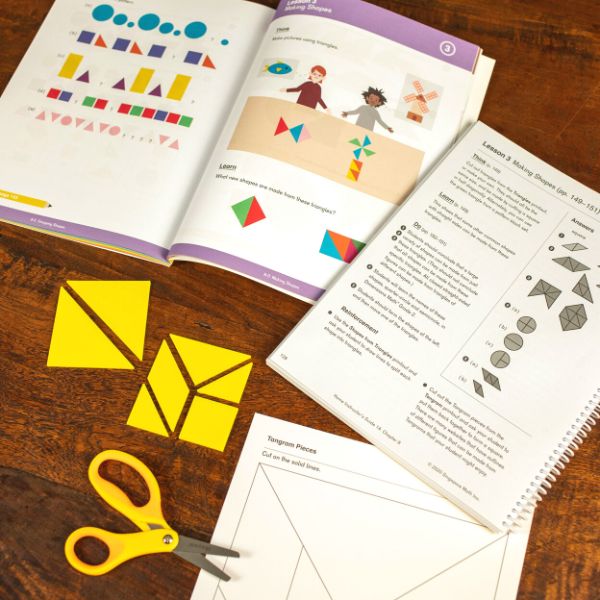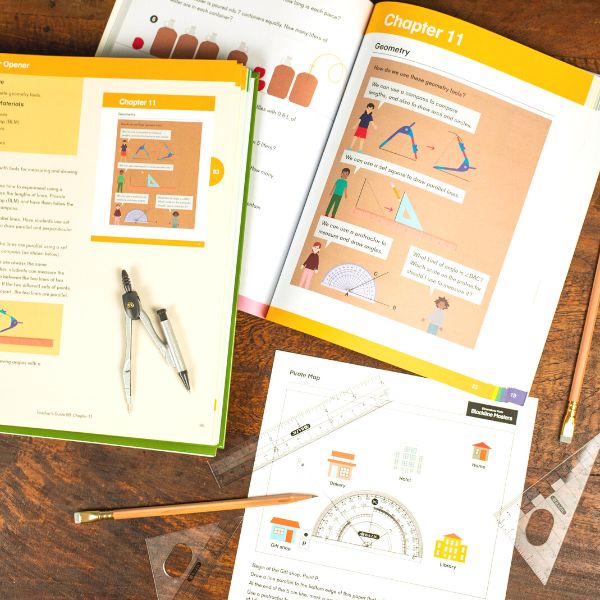Benefits of the Concrete-Pictorial-Abstract Approach in Singapore Math
Help your child develop strong problem-solving skills and a deeper understanding of math with Dimensions Math, a comprehensive Singapore math curriculum.
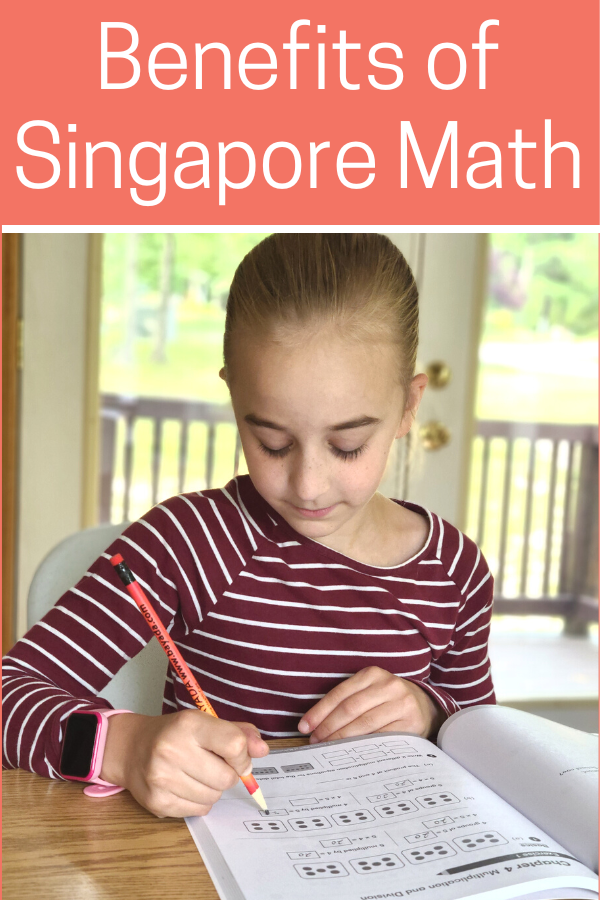
You may remember that math has sometimes been a big hurdle in our homeschool. I will never forget the tears and frustration that were a daily part of our math lessons for a while.
(Can I just say that rote memorization does NOT work for us??)
One of the things that can make the biggest difference in math learning is the concrete-pictorial-abstract approach. I haven’t always known that term, but I HAVE seen the results in our homeschool.
Dimensions Math, a Singapore math curriculum, uses this approach to help students gain a deeper understanding of math. Read on to learn more about Dimensions Math and the concrete-pictorial-abstract approach.
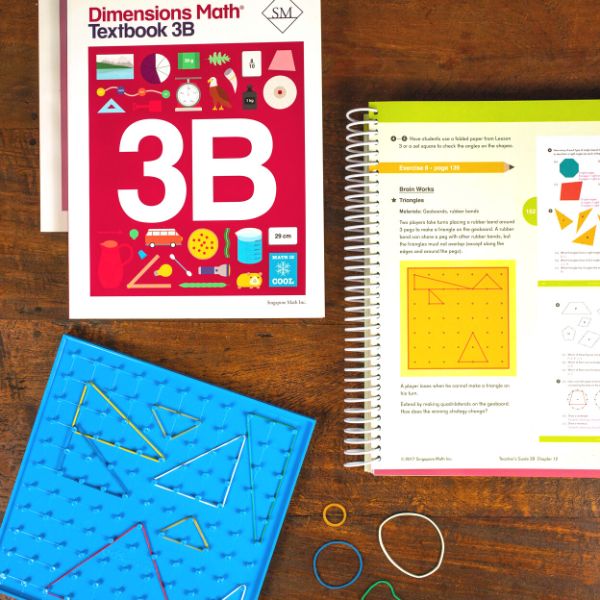
This post is sponsored by Dimensions Math. I was compensated for my time writing this post. See my Disclosure Policy for more information.
About Dimensions Math Curriculum
Singapore Math, Inc. was founded in the late 1990s by Dawn Thomas as a way to create greater understanding and success for math students. This company was the first to introduce the Singapore math curriculum in the United States and to distribute it outside of Singapore.
Now 25 years later, Singapore Math, Inc. is still family-owned and operated. Currently the founder’s daughter, Echo Thomas, is the CEO of the company.
After years of experience with their original Primary Mathematics curriculum, the company saw some ways that the Singapore math experience could be improved. They added more teacher resources, more content (no more supplements needed!), and plenty of engaging math activities and games.
The current version of their math curriculum, Dimensions Math, is the strongest Singapore math curriculum on the market. The curriculum includes a video lesson subscription, math activities, and differentiation opportunities.

What Is Singapore Math?
Singapore math is an approach to teaching math that originated in Singapore. It is well known for helping students develop strong problem-solving skills and a deeper understanding of math.
Interestingly, the term “Singapore math” is not even used in Singapore. It actually originated here in the United States as people began using it to refer to curriculum and methods based on Singapore’s approach.
“Math is just math in Singapore, just like how American football is just football in America. The trademarked term “Singapore math” is coined in the U.S. and is used to differentiate the elementary math programs that use Singapore’s approach from all the other math curricula in America.” (Wenxi Lee, “The Secrets to Singapore’s World-class Math Curriculum”, p. 13, 2020).
Problem Solving
Problem-solving is at the heart of the Singapore math curriculum. Students aren’t just memorizing formulas or following steps blindly. Instead they are trained to analyze problems from different angles and come up with creative strategies to solve them.
Students are also taught to explain their solutions clearly and effectively. After all, math isn’t just about crunching numbers—it’s also about understanding and being able to explain your thinking to others.
Number Sense and Mental Math
Singapore math places a strong emphasis on developing number sense and mental math skills. Students are encouraged to dive into number relationships, discover patterns, and make connections. All of this practice helps them become a whiz at doing mental calculations quickly and accurately.
Mastery-Based Learning
The Singapore math curriculum is a mastery-based curriculum, allowing students to fully grasp each concept before moving on. It includes plenty of practice and reinforcement to make sure they master math skills and remember them.
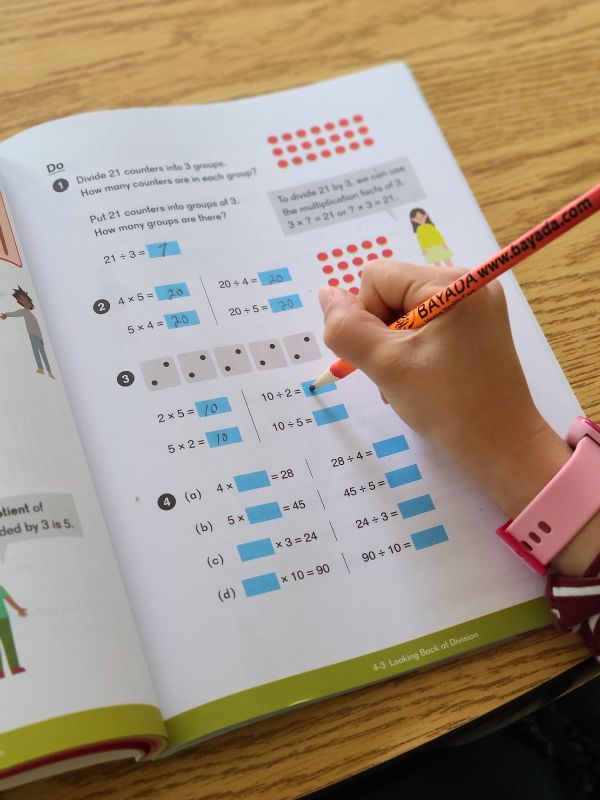
The Concrete-Pictorial-Abstract Approach in Singapore Math
One of the key features of Singapore math is its use of a concrete-pictorial-abstract (CPA) approach. This approach helps students develop a deep understanding of mathematical concepts.
So what exactly is the concrete-pictorial-abstract approach?
Imagine you’re learning math, and you come across a new concept like addition or multiplication. In the concrete stage, you would start by using real objects or manipulatives to understand the concept.
Let’s say you want to learn addition using apples. You would physically count out a few apples and then add more to see the total. By physically moving and manipulating the apples, you get a hands-on feel for what addition means.
Next comes the pictorial stage. Instead of using actual objects, you switch to pictures or diagrams to represent the math problem.
Going back to our apple example, you might draw little apples or circles on a piece of paper to show the addition process. This visual representation helps you see the relationship between the numbers and the concept of addition.
Finally, we reach the abstract stage. This is where you leave the physical objects and pictures behind and work with numbers and symbols alone.
Now, you can solve addition problems by simply writing down the numbers and carrying out the operations. At this point, you’ve built a solid understanding of addition through the concrete and pictorial stages, so working with numbers becomes a lot easier.
The beauty of this approach is that it helps you gradually move from the real world to the more abstract world of numbers. It’s like building a staircase of understanding, one step at a time.
By starting with concrete objects, then moving to pictures, and finally to numbers and symbols, you develop a deeper comprehension of mathematical concepts.
If you’re ready to ditch the math frustration and tears, you’ll want to check out Dimensions Math, a Singapore math curriculum that incorporates this three-step approach. I’ve been so impressed with the entire Dimensions Math curriculum, and I think your family would love it, too.
Want to learn more about Singapore math? Join the Singapore math users group on Facebook!

